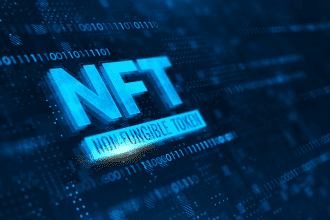Bitcoin’s Offline Lifeline: How It Survives Bank and Network Blackouts
Imagine waking up one morning to find your bank offline, your card refused at checkout and ATMs barren. The world you relied on for seamless transactions feels fragile and exposed. In contrast, the digital ledger known as Bitcoin quietly hums along, its transaction streams unaffected by the chaos. Researchers and developers of Bitcoin have long treated major communication or infrastructure failure not as a fringe scenario, but as a core test for the protocol’s resilience. Back in 2019, a fledgling hacker-radio operator managed to send a Bitcoin transaction across the U.S., from Toronto to Michigan, using nothing more than a ham radio and the ionosphere.
That experiment may have looked like a stunt, but it revealed an important truth: the Bitcoin network doesn’t care whether you’re on fibre-optic or short-wave radio.
While banks and card networks rely on layered centralised systems with manual intervention baked into their contingency plans, the Bitcoin network is built differently. Every node maintains a full copy of the ledger and can verify transactions independently. If the usual pipes go down 0f internet routing fragments, data centres fail or ISPs go dark—the network has alternatives: satellites that broadcast the blockchain globally, mesh radio networks relaying transactions node-to-node in ad hoc fashion, and even amateur-radio transmissions tapping into very old hardware.
Take the satellite route: a dish and low-bandwidth receiver can keep a node synced via geostationary satellites provided by the company Blockstream. Uplink stations let users broadcast signed transactions without touching traditional internet routing.
Then consider mesh-network systems like those pioneered in Venezuela devices that relay messages over small hop radio links across neighborhoods when cellular and fibre are unavailable.
Even if you’re deep offline, ham-radio operators have shown it’s possible to encode transactions and send them via short wave frequencies, somewhere between hobby radio and the frontier of decentralisation.
Now, what happens when the internet actually fragments at a global scale? Models envisage a scenario where the world splits into regional partitions say the Americas, Europe/Africa and Asia-Pacific. Each region keeps mining Bitcoin blocks and confirms local transactions as usual, but cross-border trade grinds to a halt. When connectivity is restored, the network resolves the competing histories through its built in proof of work rule: the chain with the greatest cumulative work wins, orphaning weaker branches.
Meanwhile banks, payment processors and clearinghouses are scrambling to reconcile partial ledgers, batch transactions, undo mistakes, and manually bring hundreds of systems back online. In previous real-world outages, card-network failures spilled into millions of failed transactions within hours.
CryptoSlate
In short, while financial institutions think of mass outages as edge-cases, Bitcoin treats them as design constraints. The mesh networks, satellites, radios they’re essentially fire drills. True, the throughput is tiny compared to what you’d expect in everyday commerce. But the point isn’t speed: it’s that value can still flow when every other system collapses. For a global settlement layer, that might matter more than being the fastest. When the banks reboot and the card rails get patched over weeks or months, Bitcoin may well have already reached a consistent state.
Of course, this doesn’t mean Bitcoin “wins” overnight. It still interacts with the broader economy, and many people depend on banks, cards, and cash daily. But what it does offer is a resilient protocol, one built to survive worst-case scenarios that few traditional systems prepare for. When the usual wires are cut, Bitcoin already has a Plan B and a Plan C, and yes, one that involves the ionosphere.
In a world where connectivity and trust are often assumed, it’s comforting that there’s a money system designed for when the assumptions break down.




















